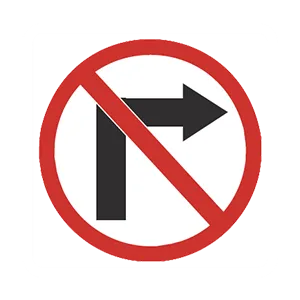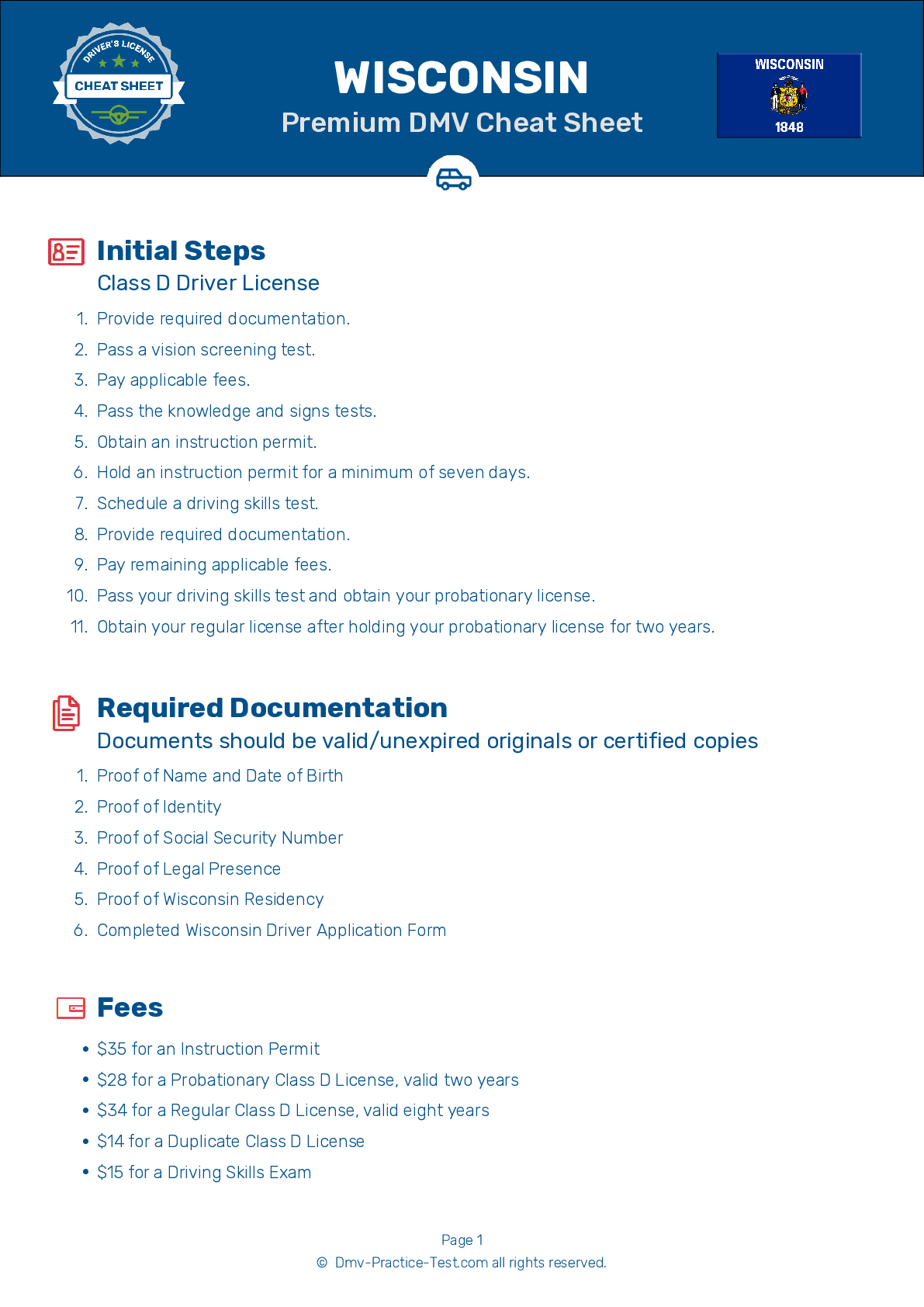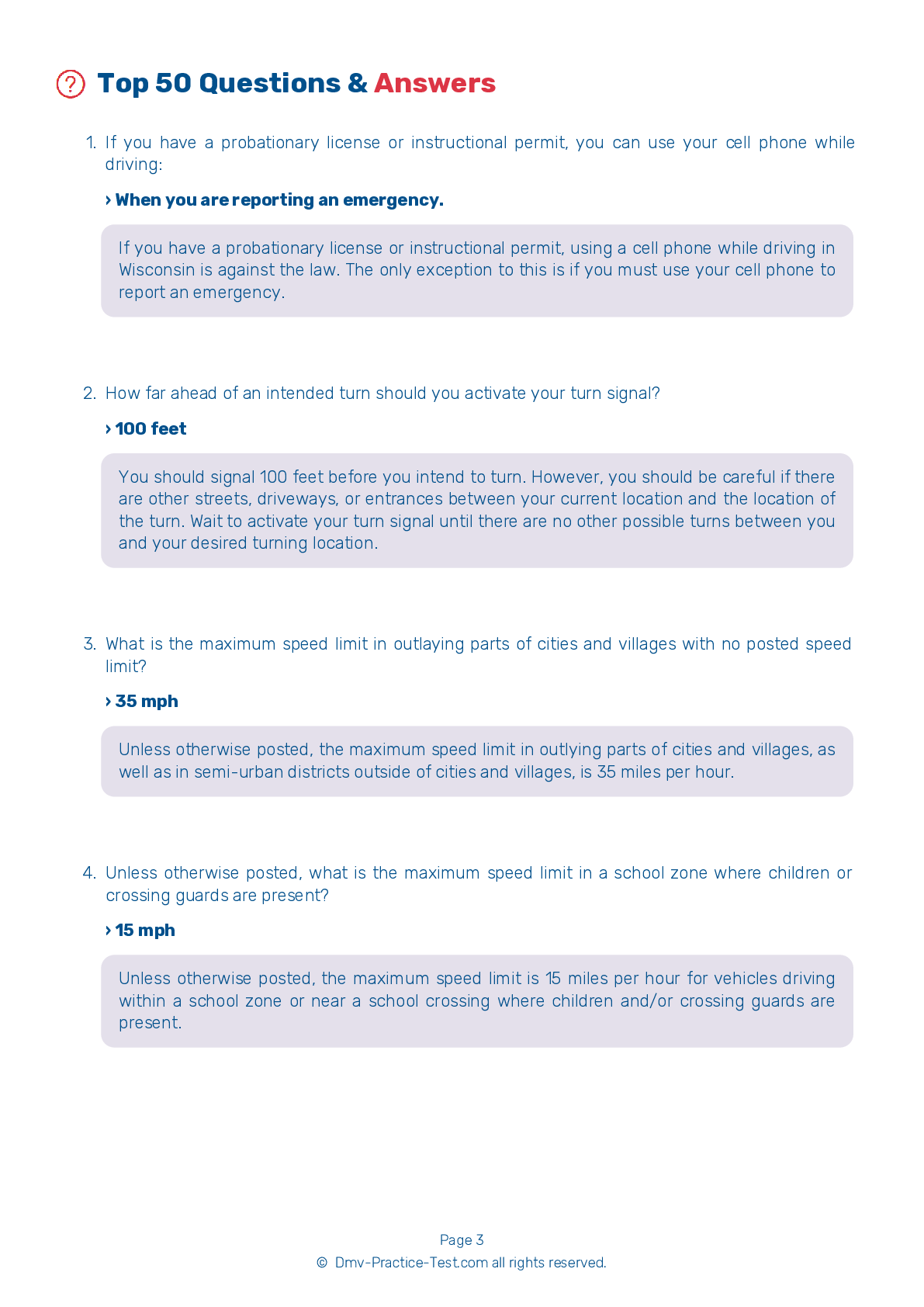FREE Wisconsin DMV Practice Test #9 Page 3 of 7
The Wisconsin DMV practise examinations have been updated for January 2026. It includes questions based on the Wisconsin Driver Handbook's most significant traffic signals and legislation for 2026. Use actual questions that are very similar (often identical!) to the DMV driving permit test and driver's licence exam to study for the DMV driving permit test and driver's licence exam.
On the practise exam, each question gets a tip and explanation to help you remember the concepts. The written component of the official Wisconsin DMV test will include questions about traffic rules, traffic signs, and driving statutes, as well as knowledge from the Driver Handbook.
To obtain a passing grade, you must correctly answer 40 of the 50 questions. Use the practise exam provided by the Wisconsin Department of Motor Vehicles to help you prepare for your instruction permit or driver's licence.
The DMV exam is available in several languages.
Using any kind of testing assistance will result in an automatic fail, and the DMV may take additional action against your driver's licence, so stay away from it.
15 . If you encounter an aggressive driver, you should:
Drivers must respect and cooperate with all other road users and conform to specific rules in order to maintain order and to avoid crashes. When encountering an aggressive driver, it is safest to just get out of their way. Always avoid competing with other drivers.
16 . You are driving on a narrow road when you meet an oncoming vehicle. You must:
On narrow roads, you must allow vehicles traveling in the opposite direction at least one-half of the main-traveled portion of the road. Both vehicles must have adequate space in order for the drivers to safely pass one another.
17 . When encountering an aggressive driver, you should:
If another driver is threatening you or intentionally driving dangerously around you, remain calm and try to put as much distance between the two of you as possible. Slow down and let them pass. Do not make eye contact and do not make obscene gestures.
18 . This sign means:
.png)
Warning signs prepare drivers for upcoming road conditions and hazards and are usually yellow with black markings. This sign tells drivers to be cautious when driving under conditions that may cause the roadway to become wet and slippery.
19 . What is the maximum speed limit in outlaying parts of cities and villages with no posted speed limit?
Unless otherwise posted, the maximum speed limit in outlying parts of cities and villages, as well as in semi-urban districts outside of cities and villages, is 35 miles per hour.
20 . The act of turning your head and checking your blind spot before changing lanes, driving away from a curb, or merging your vehicle into traffic is:
When changing lanes, it is important to check your blind spots. Do this by looking over your shoulder toward the next lane. Do not rely only on your mirrors.
21 . This sign means:

This sign indicates that turns in the direction of the arrow (in this case, to the right) are prohibited.
See the exact questions that will be on the 2026 Wisconsin DMV exam.
99.2% of people who use the cheat sheet pass the FIRST TIME
LT gives us an insight on how the cheat sheet provided her with all the study questions she needed before taking her test.
Joe initially studied with the handbook and failed his test, he eventually found us online, studied and pass his test the first time around.



